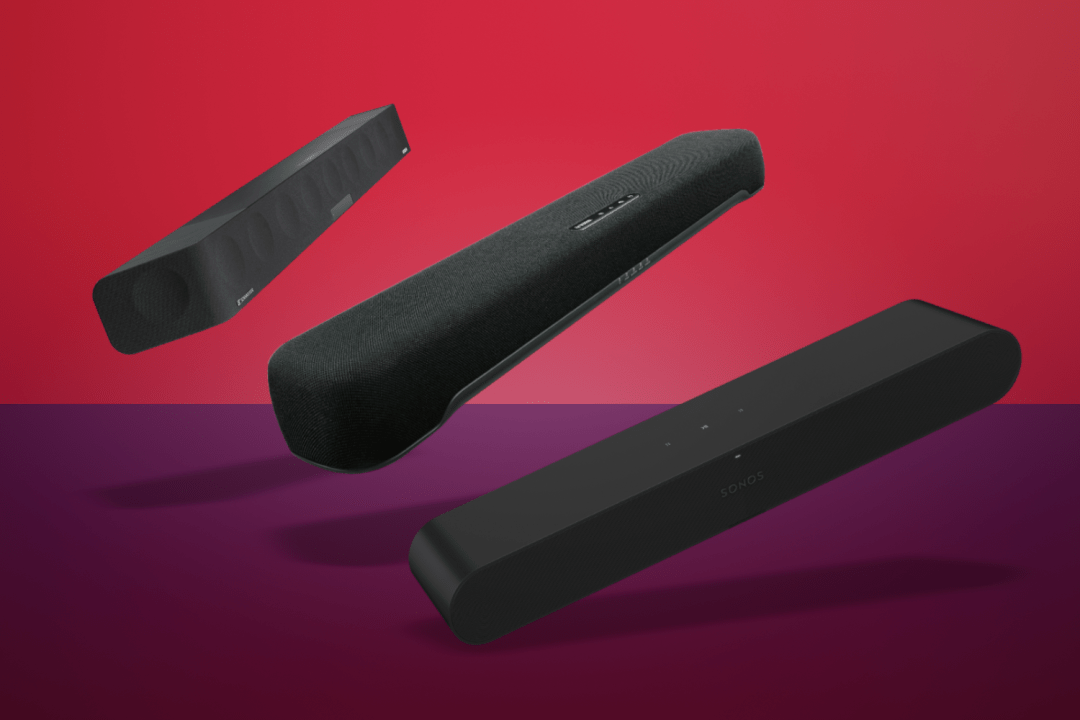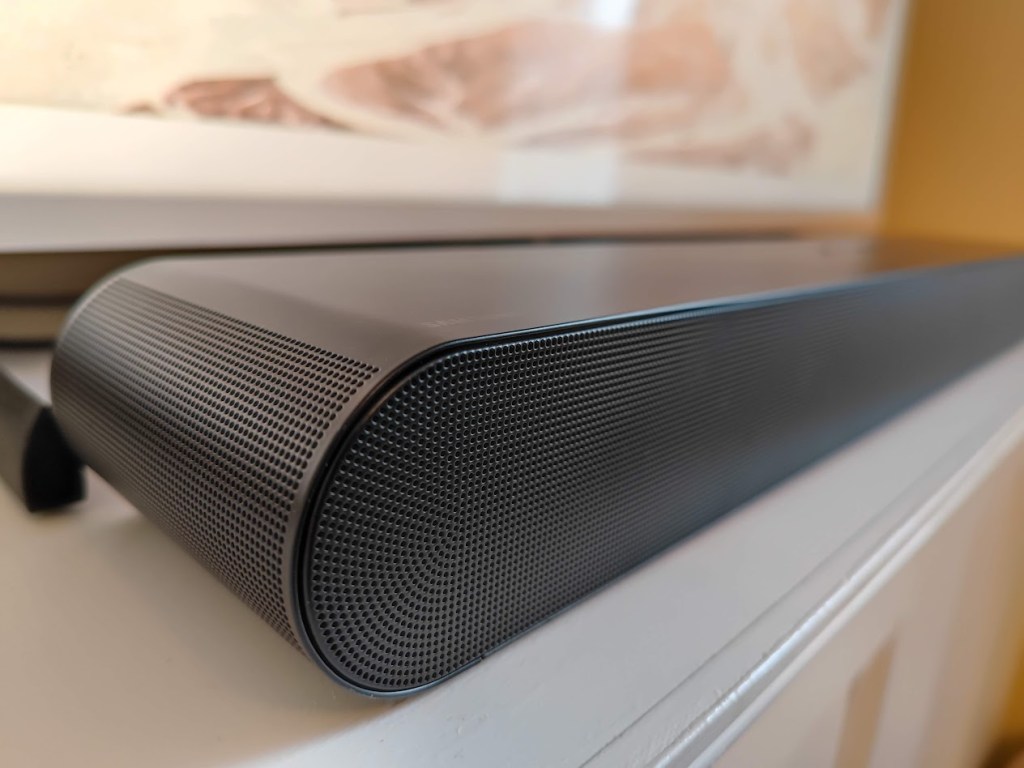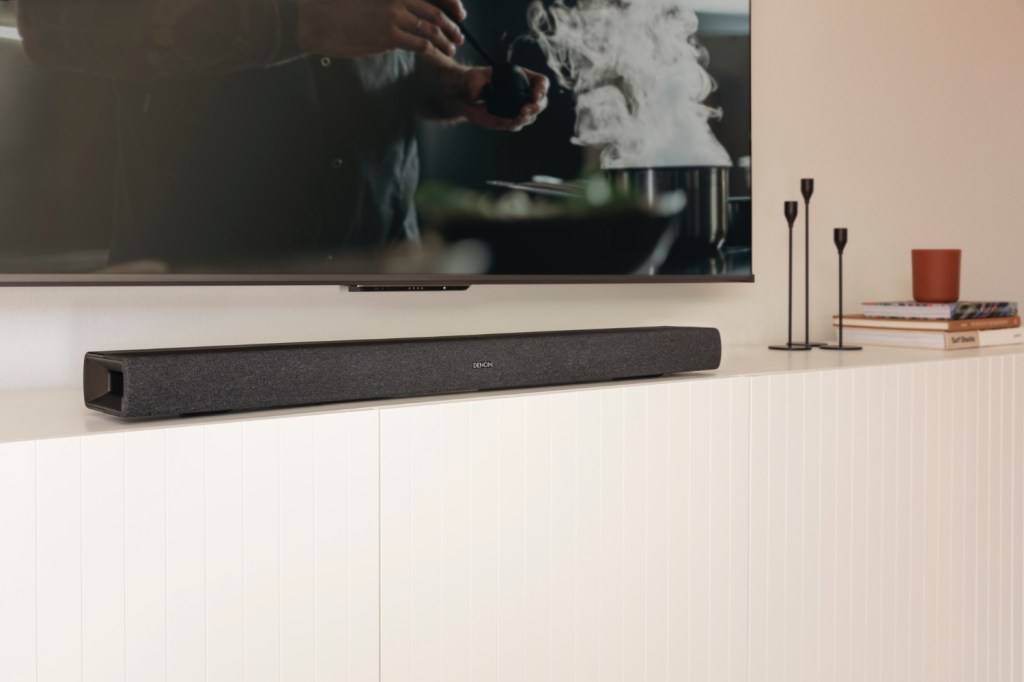Soundbar vs system: how to build a cinema system with a soundbar
Soundbars can be a great way to build a cinema system for less. Here's how you can ditch the sound system.

While typically you’d have to shell out on a multi-speaker surround sound system to build a home cinema, those days are gone. Now, you can nab one of the top soundbars and have yourself a pretty convincing cinema system in your living room. There’s less wiring, fewer speakers, and less to empty from the wallet.
Sounds pretty sweet, right? But how can a sound-blasting rectangle replace what previously required multiple speakers? Here, we’ll guide you on how to create a cinema system with just a soundbar.
Why choose a soundbar over a speaker system?
Setting up speakers in your living room typically requires a tangled mess of strewn cables, getting the torch out, and a few obscenities shouted for good measure. But soundbars mean you can ditch all of this. Rather than dealing with multiple speakers, you’ve only got one rectangular bar to wrestle with. It needs a cable to the wall and one to your telly or receiver, and that’s it.

Soundbars make it an awful lot easier to get your system set up, and are usually a lot easier on your wallet as well. Rather than shelling out for a system consisting of five different speakers, you’ve only got one to buy. It might be more expensive than a standalone you’d hook up to your system, but the overall price is a lot tidier.
They’ve also got solid sound these days. Some of the bars we’ve reviewed in the past have been pretty convincing against traditional home cinema systems. So picking a soundbar brings you less faff, costs less, and can sound just as good. But how can you turn this into a home cinema system?
How to know what sounds good
First and foremost on your list should be what sounds good. You’re listening to audio, so you want it to sound right. There’s no point adding a soundbar to your home cinema system if it can’t keep up.
Of course, everyone has preferences over sound. But some key points to bear in mind are audio clarity, bass, and overall sound performance. If possible, you want to listen to a soundbar before you buy it. Do voices remain clear as you crank up the volume? Is the bass booming without drowning things out? If you can’t lend an ear to one of these bars before buying, make sure to check the technical specs. And better still, glance over some reviews (even better if they’re from Stuff).

Check out how many drivers a soundbar has, too. If you simply want to boost audio from your TV or monitor, a soundbar with 2.1 channels will suffice; that’s two front channels and a subwoofer. A 4.1 channel system – two front channels, two rear speakers and a subwoofer – can deliver multichannel sound. But for those looking to build a cinema system, consider a 5.1 system, which holds five full-range drivers and a subwoofer. The more drivers inside, the bigger the sound. And how big your room is plays a big factor in this.
How to make sure the sound fills your room
You don’t need all these extra drivers if your living room isn’t much bigger than a shoebox. Likewise, a puny one driver will act like a fart in a hurricane if you’ve got a larger room. Thankfully, the general rule when picking a soundbar right for your room is pretty straightforward.
If you’ve got a larger room with high ceilings, look for a soundbar that’s higher power to fill the space. Look at how many watts it blasts out, and try to go for a larger number. Consider options with extra channels and more drivers. By combining power with additional speaker parts, you’ll get sound that’s naturally bigger and louder. It’ll help to fill your room and means you won’t get distorted audio from dialling the volume knob up to eleven.

Whereas in smaller rooms, a beefy soundbar will overwhelm the space. You should opt for something a little tamer that spits out fewer watts and doesn’t cram in quite so many drivers. A smaller channel soundbar will likely be your best bet here.
How to make sure you benefit from surround sound
One challenge with soundbars is creating convincing surround sound. Whether it’s bog-standard 5.1 audio, 3D sound, or Dolby Atmos, surround sound is pretty essential for a cinema system in your living room. The biggest benefit of traditional home cinema systems is that you can physically move the speakers. Want to hear voices behind you? Set up your rear speakers behind your sofa. Soundbars don’t have that luxury, so have to rely on some clever trickery.
To direct sound above you or behind you, soundbars rely on upwards firing speakers. There’s a little bit of science involved, but essentially soundwaves bounce off your ceiling and walls to get where you want them to go. It’s not quite as realistic as physically popping a speaker behind you, but it can be quite convincing.

When buying a soundbar, make sure to look for an option that packs upwards firing speakers. LG’s S95QR is a good option we’ve reviewed, as is the Philips Fidelio FB1. Features like Dolby Atmos or DTS:X are a must for surround sound – giving you top-notch audio processing to work alongside your hardware. And to make sure you benefit from directional audio, such as traffic moving from side to side, make sure your soundbar packs multiple drivers. Here, the sound can physically move across each speaker.
Should you consider other speakers?
One other point to bear in mind is that many soundbars can be built as part of a system. Sonos’ offering, for example, lets you easily hook up other speakers to create a system. If you start out with a soundbar and want to improve your cinema system later on, you can add additional speakers. Make sure you check your soundbar has this functionality before buying one.
Why would you want to add other speakers if we’ve spent the past few hundred words touting that you don’t need them? Soundbars are good, but can’t live up to some of the physical benefits of traditional systems. Whacking in a few rear speakers will only improve your surround sound, make things sound louder, or fill your room. You don’t need them, but they will only make your cinema system sound better.


